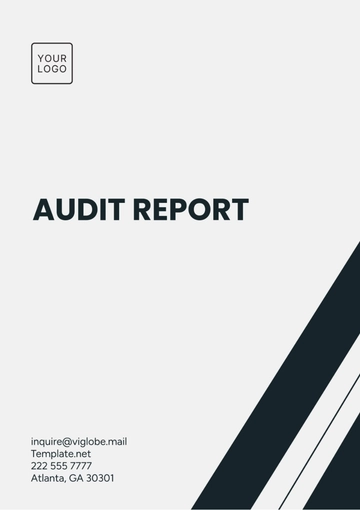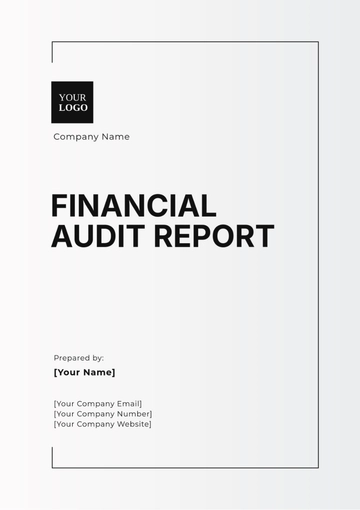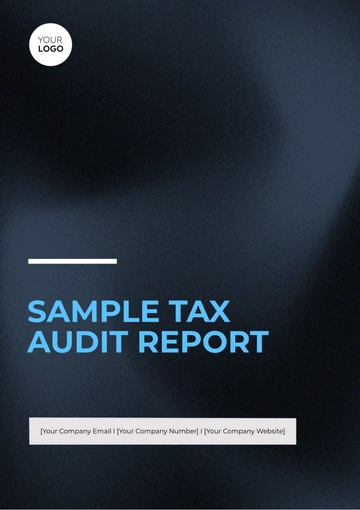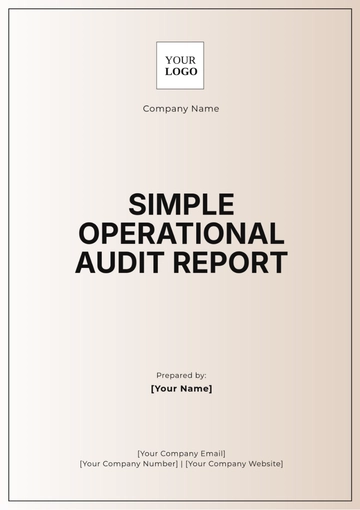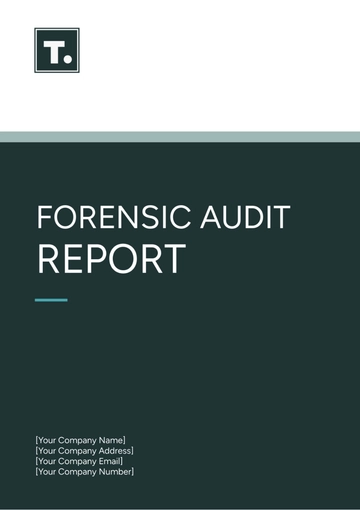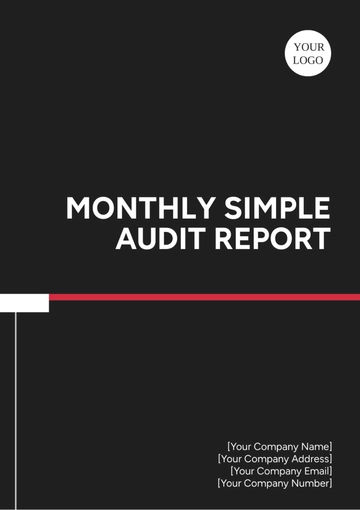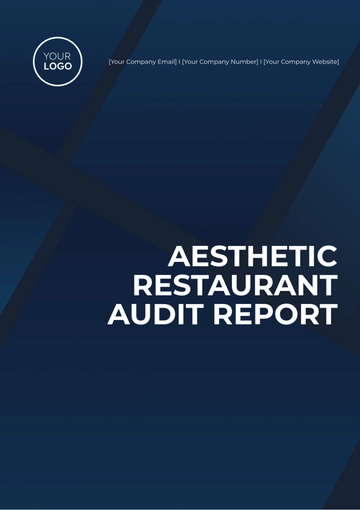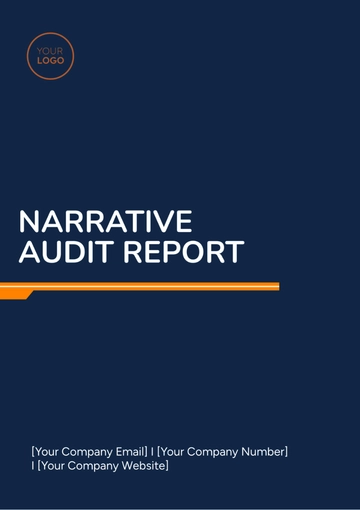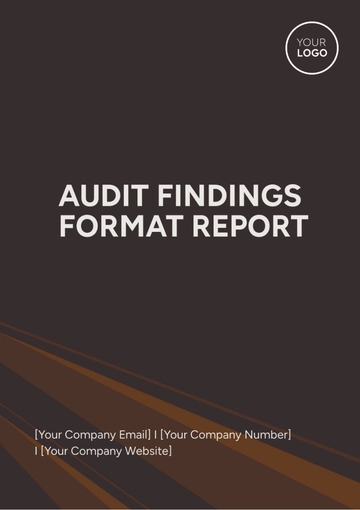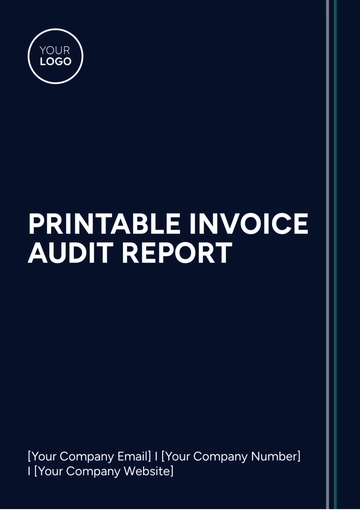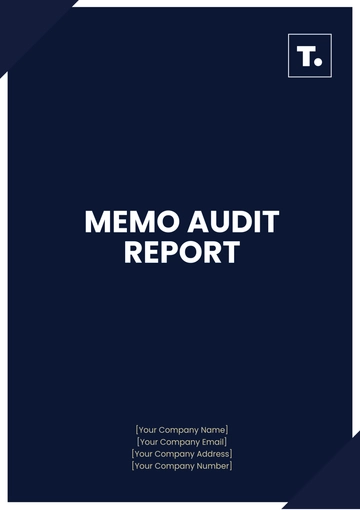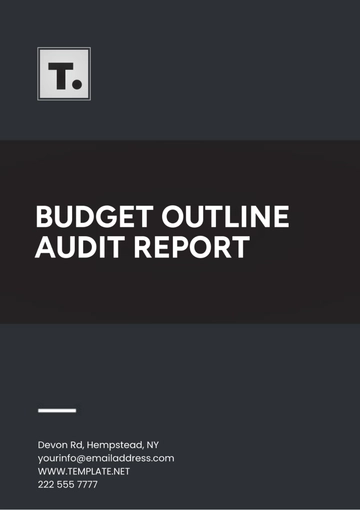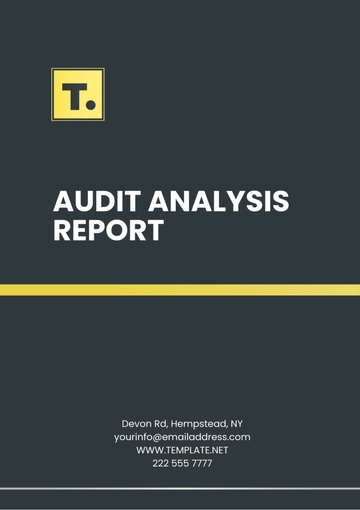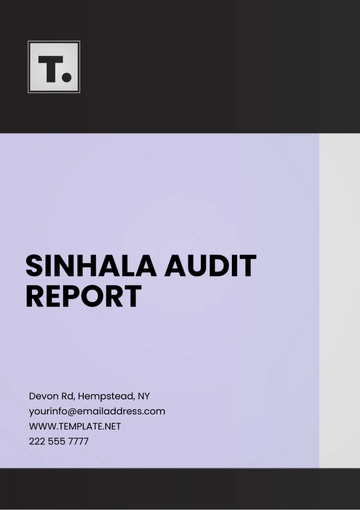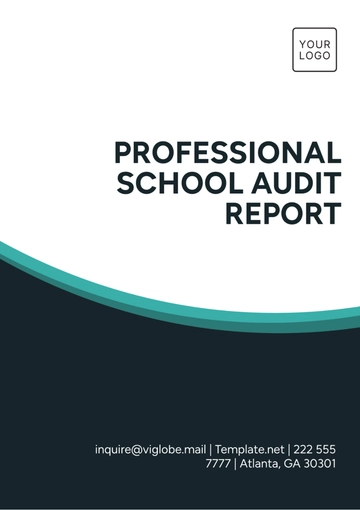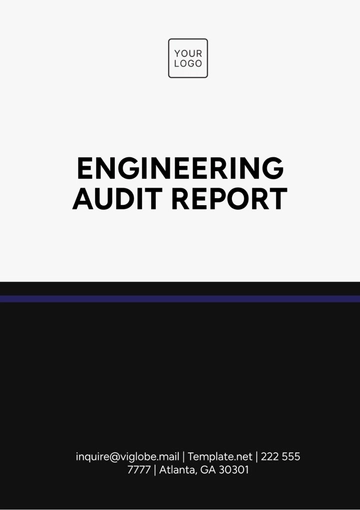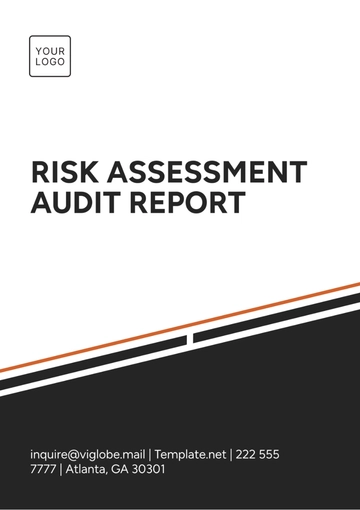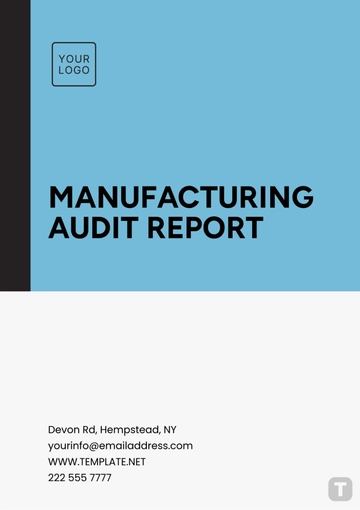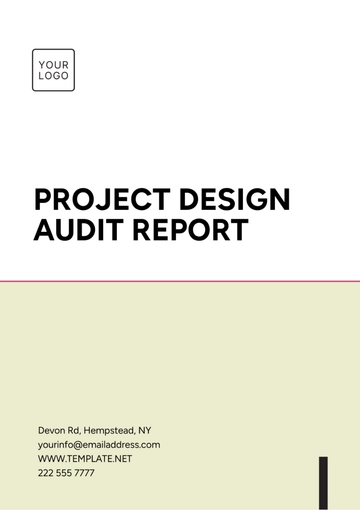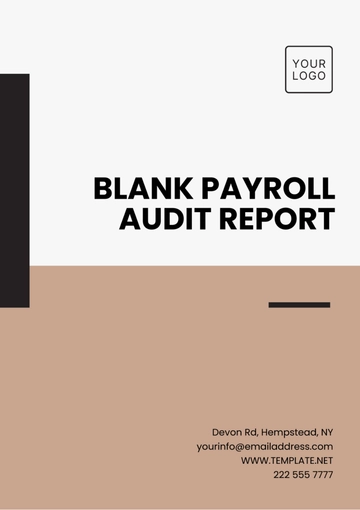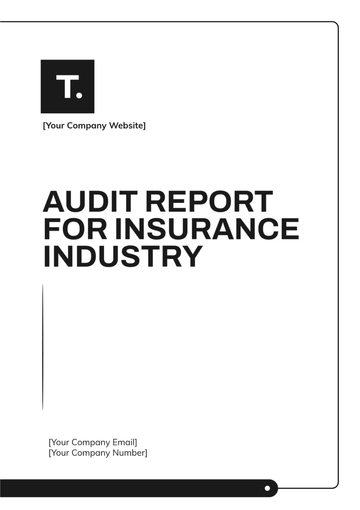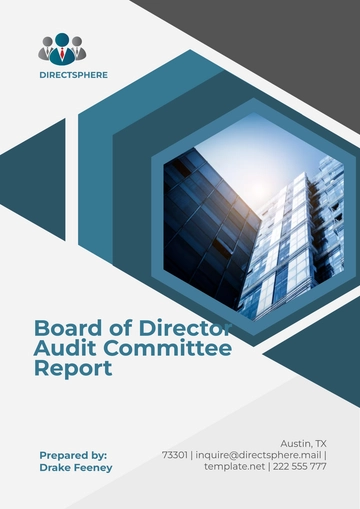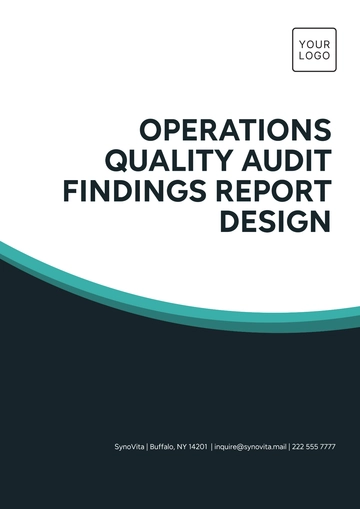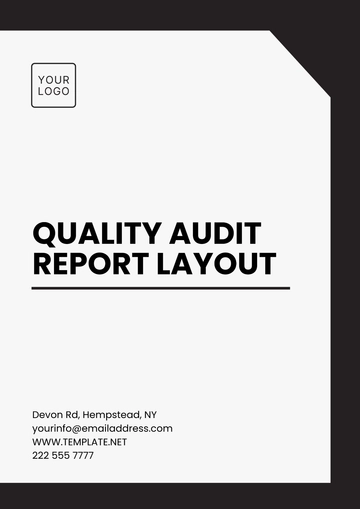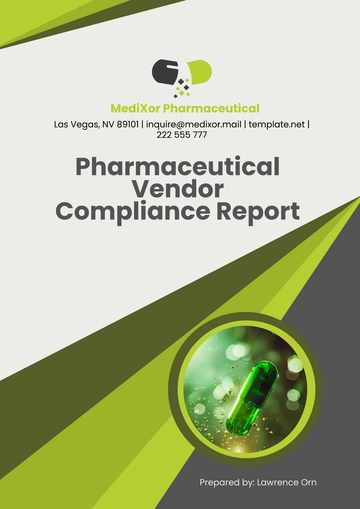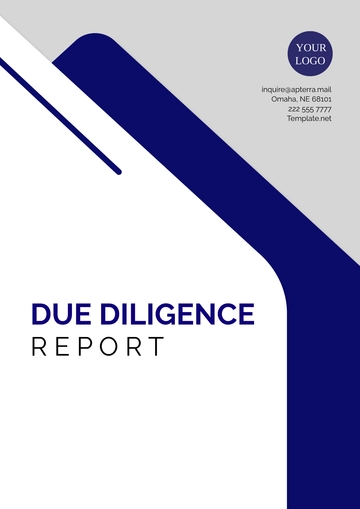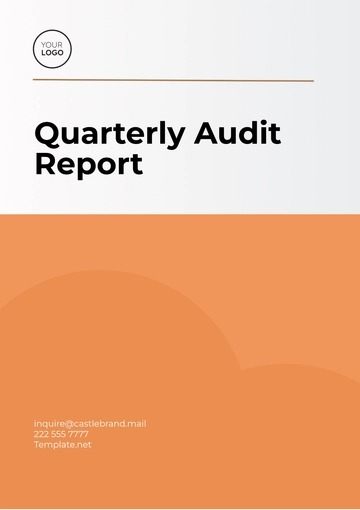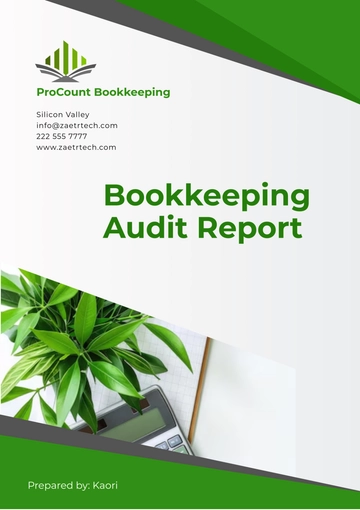Free Stock Audit Report of Pharmaceutical Company
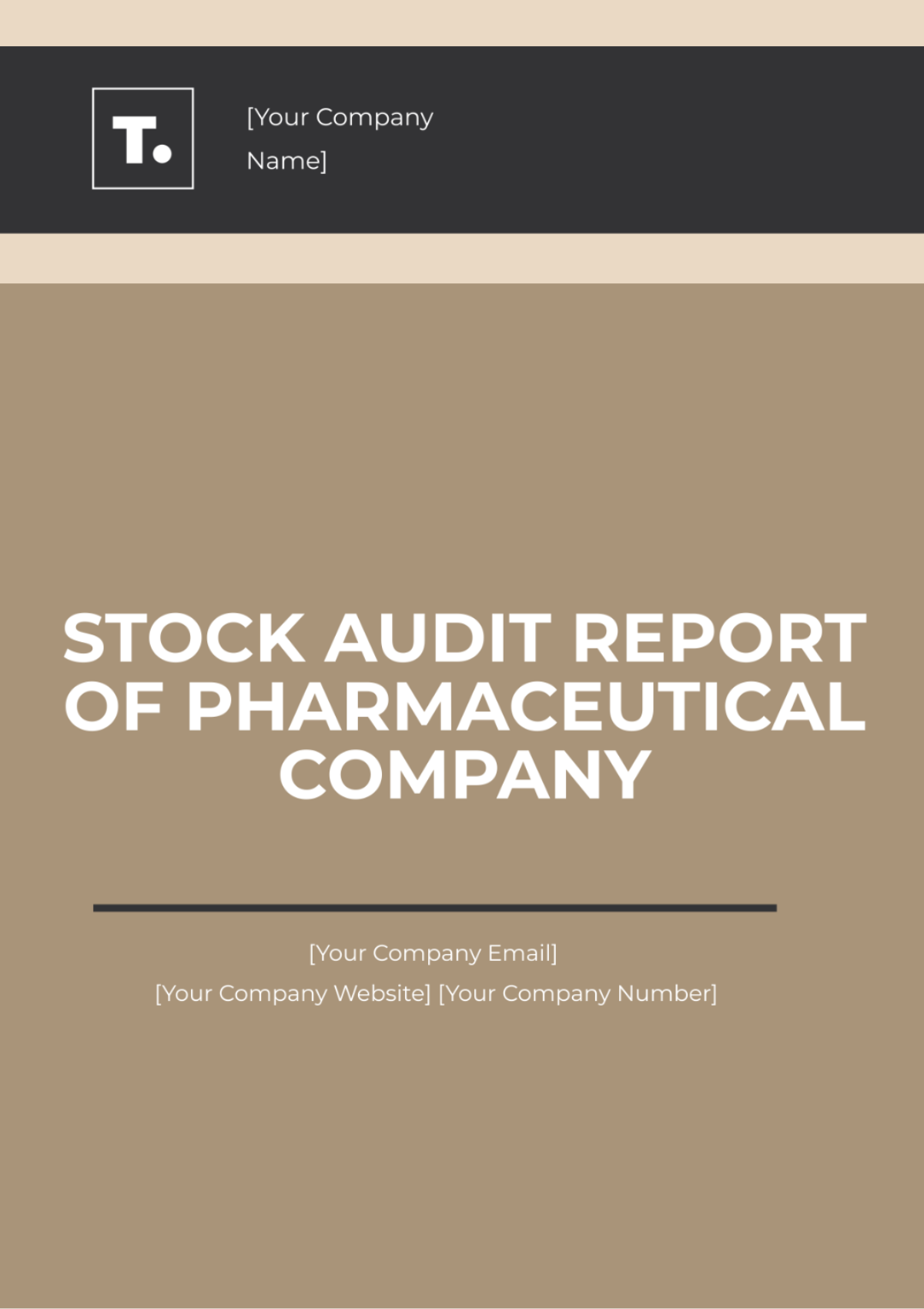
Prepared By: [YOUR NAME]
Date: [DATE]
Company Name | [YOUR COMPANY NAME] |
Name | [YOUR NAME] |
[YOUR EMAIL] | |
Phone Number | [YOUR COMPANY NUMBER] |
Address | [YOUR COMPANY ADDRESS] |
Website | [YOUR COMPANY WEBSITE] |
I. Executive Summary
This stock audit report of [YOUR COMPANY NAME] aims to identify areas for improvement in inventory control procedures to prevent drug shortages, expired product issues, or counterfeit drug infiltration. The audit was performed over three months, thoroughly analyzing various stock control processes. The findings highlight critical areas that need attention to enhance overall inventory management. By implementing the recommended actions, [YOUR COMPANY NAME] can improve stock accuracy, minimize wastage, and ensure the safety and efficacy of its pharmaceutical products.
II. Introduction
The objective of this audit was to evaluate the current inventory controls within [YOUR COMPANY NAME] and to identify any potential areas for improvement. Effective inventory management is crucial for several reasons:
Preventing Drug Shortages: Ensuring that there is always an adequate supply of essential medications to meet patient needs.
Ensuring Safety and Efficacy: Maintaining the integrity of pharmaceuticals by preventing the use of expired or counterfeit products.
Safeguarding Against Counterfeit Drugs: Implementing robust measures to detect and prevent counterfeit drugs from entering the supply chain.
Effective inventory management supports the overall goal of providing safe and reliable pharmaceutical products to customers while optimizing operational efficiency and compliance with regulatory standards.
III. Methodology
The audit was conducted using a systematic approach that included a detailed review of inventory records, physical stock checks, and interviews with key personnel. The following steps outline our approach:
Review of Inventory Management Documentation: Analyzed existing inventory management policies, procedures, and records to understand the current practices and identify any documentation gaps.
Physical Verification of Stock: Conducted physical counts of stock items across various storage locations to verify their existence and accuracy against recorded quantities.
Analysis of Stock Usage Patterns: Examined historical data and usage patterns to identify trends, potential shortages, and areas where inventory management could be optimized.
Stakeholder Interviews and Process Observation: Engaged with key personnel, including warehouse staff, procurement officers, and quality assurance teams, to gather insights into the day-to-day inventory management practices and challenges.
Comparative Analysis with Industry Best Practices: Benchmarked the company's inventory management practices against industry standards and best practices to identify areas for improvement.
IV. Findings
A. Inventory Control Procedures
Stock Levels
Finding: Inconsistent stock levels were identified, leading to both excess and short supplies of critical medications.
Impact: Inadequate stock levels can result in drug shortages, impacting patient care, while excess stock can lead to increased holding costs and wastage.
Expired Products
Finding: An average of 5% of the products were found to be expired, highlighting issues in stock rotation and monitoring.
Impact: The presence of expired products poses a risk to patient safety and can result in financial losses due to wastage.
Counterfeit Risks
Finding: Gaps were identified in the supply chain security which may allow counterfeit drugs.
Impact: Counterfeit drugs can compromise patient safety and damage the company's reputation, potentially leading to legal and financial repercussions.
B. Key Issues
Drug Shortages
Finding: Intermittent shortages of essential drugs were observed.
Impact: Drug shortages can disrupt treatment plans and negatively affect patient outcomes.
Expired Product Management
Finding: Lack of effective identification and removal processes for near-expiry products.
Impact: This can lead to the inadvertent use of expired medications, posing serious health risks to patients.
Counterfeit Drug Infiltration
Finding: Vulnerabilities in procurement practices that may expose the company to counterfeit drug risks.
Impact: The presence of counterfeit drugs can severely undermine patient trust and lead to significant legal liabilities.
V. Recommendations
Stock Replenishment System: Implement a more robust stock replenishment system that predicts shortages based on usage trends.
Action: Utilize advanced inventory management software with predictive analytics to forecast demand and optimize stock levels.
Benefit: Ensures consistent availability of essential medications and reduces the risk of stock outs and overstocking.
Expiry Monitoring: Enhance monitoring practices with automated alerts for approaching expiry dates.
Action: Implement an automated system that tracks expiry dates and generates alerts for products nearing expiration.
Benefit: Reduces the occurrence of expired products, ensuring only safe and effective medications are dispensed.
Supply Chain Security: Strengthen the supply chain security protocols to mitigate the risk of counterfeit drugs.
Action: Introduce stricter verification processes for suppliers and incorporate technologies like blockchain for traceability.
Benefit: Enhances the integrity of the supply chain and reduces the risk of counterfeit drug infiltration.
Regular Audits: Increase the frequency of internal audits to ensure compliance and identify issues proactively.
Action: Schedule quarterly internal audits and implement corrective actions based on audit findings.
Benefit: Maintains high standards of inventory management and ensures ongoing compliance with regulatory requirements.
VI. Table: Summary of Key Issues Identified During Stock Audit
Key Issue | Description | Impact | Recommended Action |
Stock Levels | Inconsistent stock levels | Disruption in supply chain and sales | Implement robust stock replenishment system |
Expired Products | 5% of products were expired | Wastage, potential risk to patient safety | Automated alerts for approaching expiry dates |
Counterfeit Risks | Gaps in supply chain security | Risk of distributing unsafe drugs | Strengthen supply chain security protocols |
Drug Shortages | Intermittent shortages of essential drugs | Inability to meet patient demand | Predict shortages based on usage trends |
Expired Product Management | Ineffective processes for identifying near-expiry products | Risk of distributing expired products | Effective identification and removal processes |
Documentation Compliance | Incomplete or missing stock transaction documentation | Lack of audit trail, increased error risk | Ensure all stock transactions are properly recorded |
Internal Control Weaknesses | Inadequate segregation of duties and lack of supervision | Increased risk of fraud and errors | Enhance internal control procedures |
Regulatory Compliance | Non-compliance with stock management regulations | Legal penalties, risk to company reputation | Regular audits for regulatory compliance |
VII. Conclusion
Proactive measures must be adopted at [YOUR COMPANY NAME] to enhance its inventory control procedures significantly. By addressing the identified issues, the company can ensure the availability of essential medications, minimize wastage, and protect against counterfeit drugs. Implementing the recommended actions will not only improve inventory accuracy but also enhance overall operational efficiency and patient safety.
- 100% Customizable, free editor
- Access 1 Million+ Templates, photo’s & graphics
- Download or share as a template
- Click and replace photos, graphics, text, backgrounds
- Resize, crop, AI write & more
- Access advanced editor
Enhance your pharmaceutical company's efficiency with the Stock Audit Report Template from Template.net. Fully customizable and editable, it streamlines stock management. Editable in our AI Editor Tool, this template ensures precise audits tailored to your needs. Maximize productivity and accuracy with ease.
You may also like
- Sales Report
- Daily Report
- Project Report
- Business Report
- Weekly Report
- Incident Report
- Annual Report
- Report Layout
- Report Design
- Progress Report
- Marketing Report
- Company Report
- Monthly Report
- Audit Report
- Status Report
- School Report
- Reports Hr
- Management Report
- Project Status Report
- Handover Report
- Health And Safety Report
- Restaurant Report
- Construction Report
- Research Report
- Evaluation Report
- Investigation Report
- Employee Report
- Advertising Report
- Weekly Status Report
- Project Management Report
- Finance Report
- Service Report
- Technical Report
- Meeting Report
- Quarterly Report
- Inspection Report
- Medical Report
- Test Report
- Summary Report
- Inventory Report
- Valuation Report
- Operations Report
- Payroll Report
- Training Report
- Job Report
- Case Report
- Performance Report
- Board Report
- Internal Audit Report
- Student Report
- Monthly Management Report
- Small Business Report
- Accident Report
- Call Center Report
- Activity Report
- IT and Software Report
- Internship Report
- Visit Report
- Product Report
- Book Report
- Property Report
- Recruitment Report
- University Report
- Event Report
- SEO Report
- Conference Report
- Narrative Report
- Nursing Home Report
- Preschool Report
- Call Report
- Customer Report
- Employee Incident Report
- Accomplishment Report
- Social Media Report
- Work From Home Report
- Security Report
- Damage Report
- Quality Report
- Internal Report
- Nurse Report
- Real Estate Report
- Hotel Report
- Equipment Report
- Credit Report
- Field Report
- Non Profit Report
- Maintenance Report
- News Report
- Survey Report
- Executive Report
- Law Firm Report
- Advertising Agency Report
- Interior Design Report
- Travel Agency Report
- Stock Report
- Salon Report
- Bug Report
- Workplace Report
- Action Report
- Investor Report
- Cleaning Services Report
- Consulting Report
- Freelancer Report
- Site Visit Report
- Trip Report
- Classroom Observation Report
- Vehicle Report
- Final Report
- Software Report
